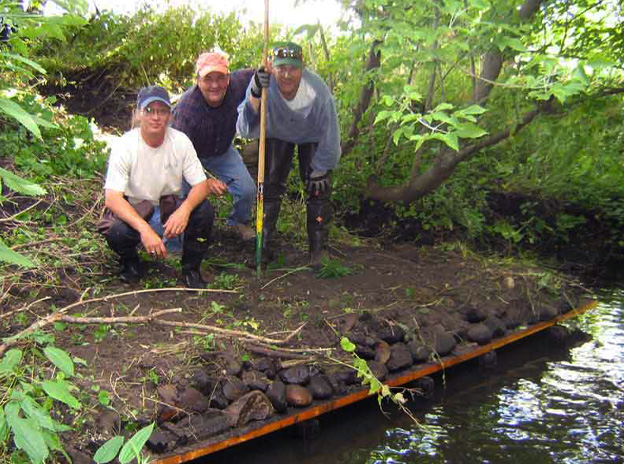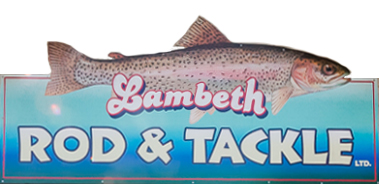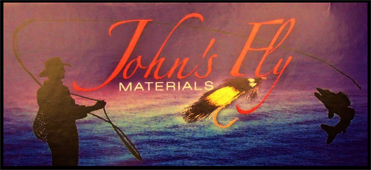TRAA Stream Rehabilitation
Rehab' Committee co-Chairs Jeremy Beaton and Paul
Holmes organized a series of work parties in
September
and October of 2011. Here are some
highlights for
your viewing pleasure. Please note that this core group
of
dedicated volunteers
would
welcome
additional
bodies out
to these fun
and rewarding events!

This badly eroded section of Komoka Creek afforded an
opportunity to install a series of "lunker structures" that
create habitat for trout and other stream inhabitants. These
structures will also combat further erosion at this vulnerable
site.
Victor Fulcher, Jeremy Beaton and Paul Holmes check
out the
site. The stream actually flows under this structure
about
as far back as where Paul is standing.
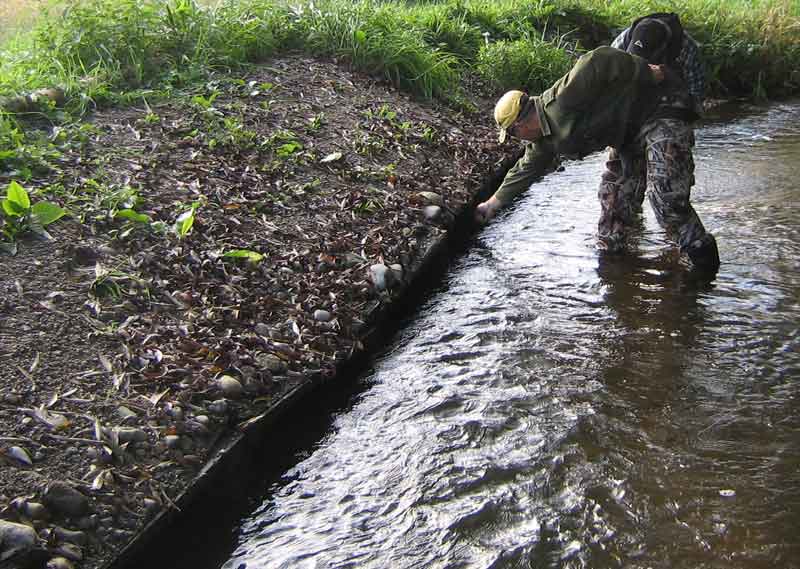
Randy Bailey and Paul Holmes check out the depth of
the
stream under the lunker structures as well as how
far back
the stream flows under these structures. The
stick Randy's using is about a metre long!
Note the vegetation that is already taking hold on the
top of the structure. Native grasses and other plants
will have covered the area by the spring of 2012 so
that the work that was done here will be indistinguishable
from the surrounding streambanks.
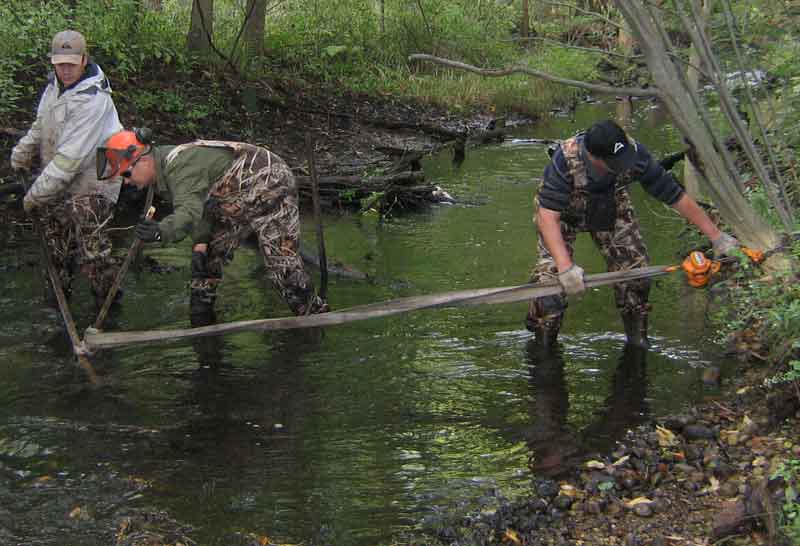
The TRAA has been at this habitat improvement game
for
a while and some of the structures have served
their purposes. Some of them actually need to be
removed or modified as the
stream
responds to the
changes. What remains of many
of these
structures
are the T-bars that were driven
into the
streambed to
anchor them in place. Most
required
a tow
strap, a pry
bar and a come-along to
be pulled from the
streambed.
It's tough work but they
were all eventually removed.
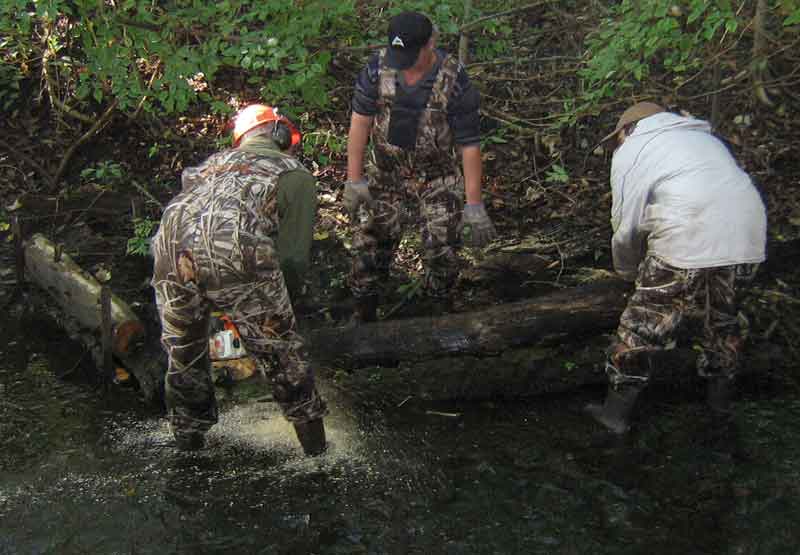
Randy cuts a log to size for a deflector. A deflector is an
in-stream device that "steers" the stream's flow. This can
be
useful in protecting vulnerable areas from erosion.
Another use is for speeding flow and creating depth. This
does three things: it improves oxygenation of the water,
it stabilizes water temperatures at a cooler level and it
improves the stream's ability to carry silt.

Jeremy and Randy let the stream do the work moving a
log into position. Paul waits to help lift it into place on
the
deflector. All the material used in these deflectors
were gleaned from trees that had fallen into the stream
and were causing undesirable obstructions.
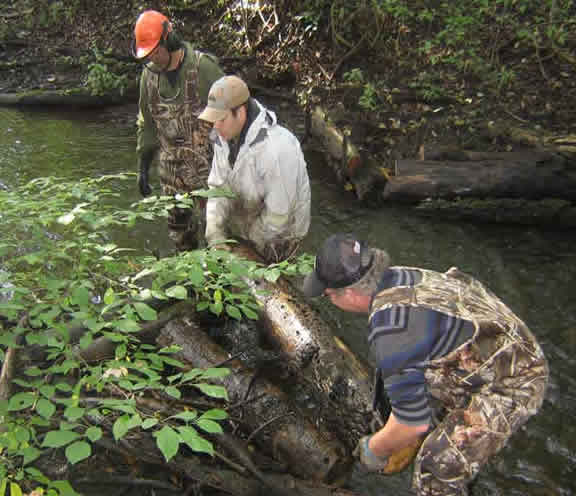
Jeremy and Paul heave a pre-cut log into place on a
deflector. Randy will likely make some "chain saw"
modifications
once it's in position.
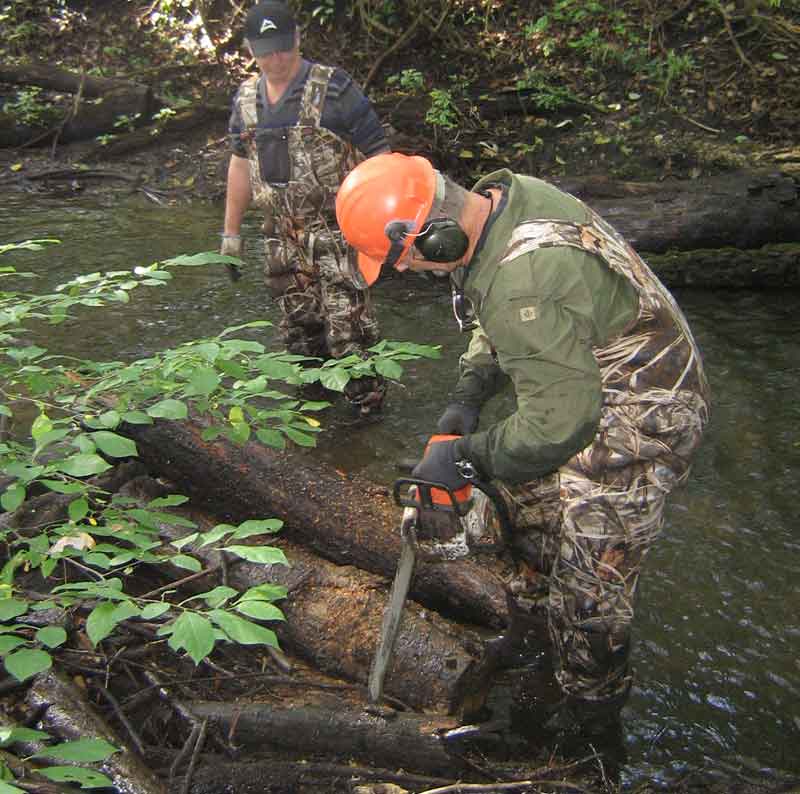
Randy trims and notches as required so the deflector's
structure is solid enough to withstand the high water
events
coming this spring.
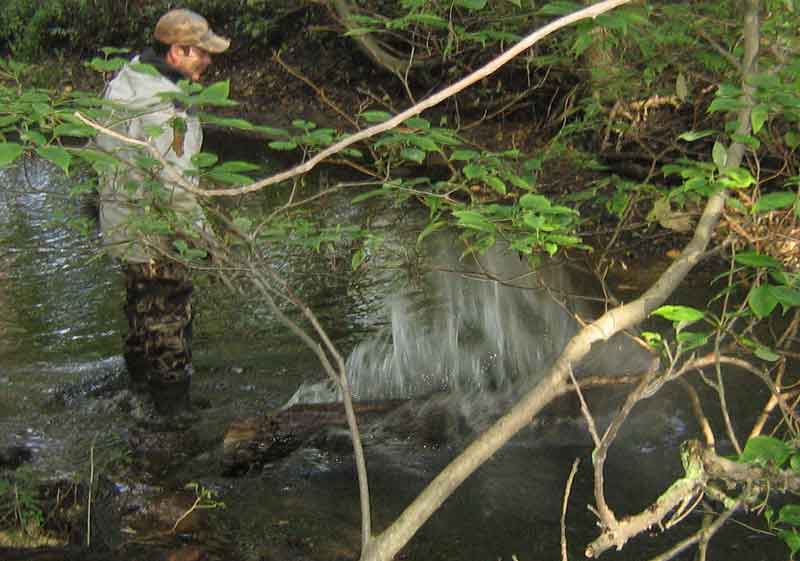
Jeremy demonstrates why you wear your "not so nice"
clothes and TRAA-issued waders. Note the tightly closed
eyes and sealed mouth. This comes naturally to a
seasoned stream rehab' veteran.

Jeremy, Randy and Paul proudly pose with two of the
many deflectors constructed this fall. Have a look at the
stream's flow and note how the two structures are
maximizing its natural tendencies while minimizing
bankside erosion.

Victor trims "sweepers" and other obstructions that may
cause future issues. Sweepers are overhanging
branches and brush that can catch debris in the stream.
This starts a process that eventually builds into a
full-blown blockage. The trimming also has to be
performed judiciously because we still want to maintain
the canopy of foliage above the stream for cover and to
keep water temperatures as stable as possible.
